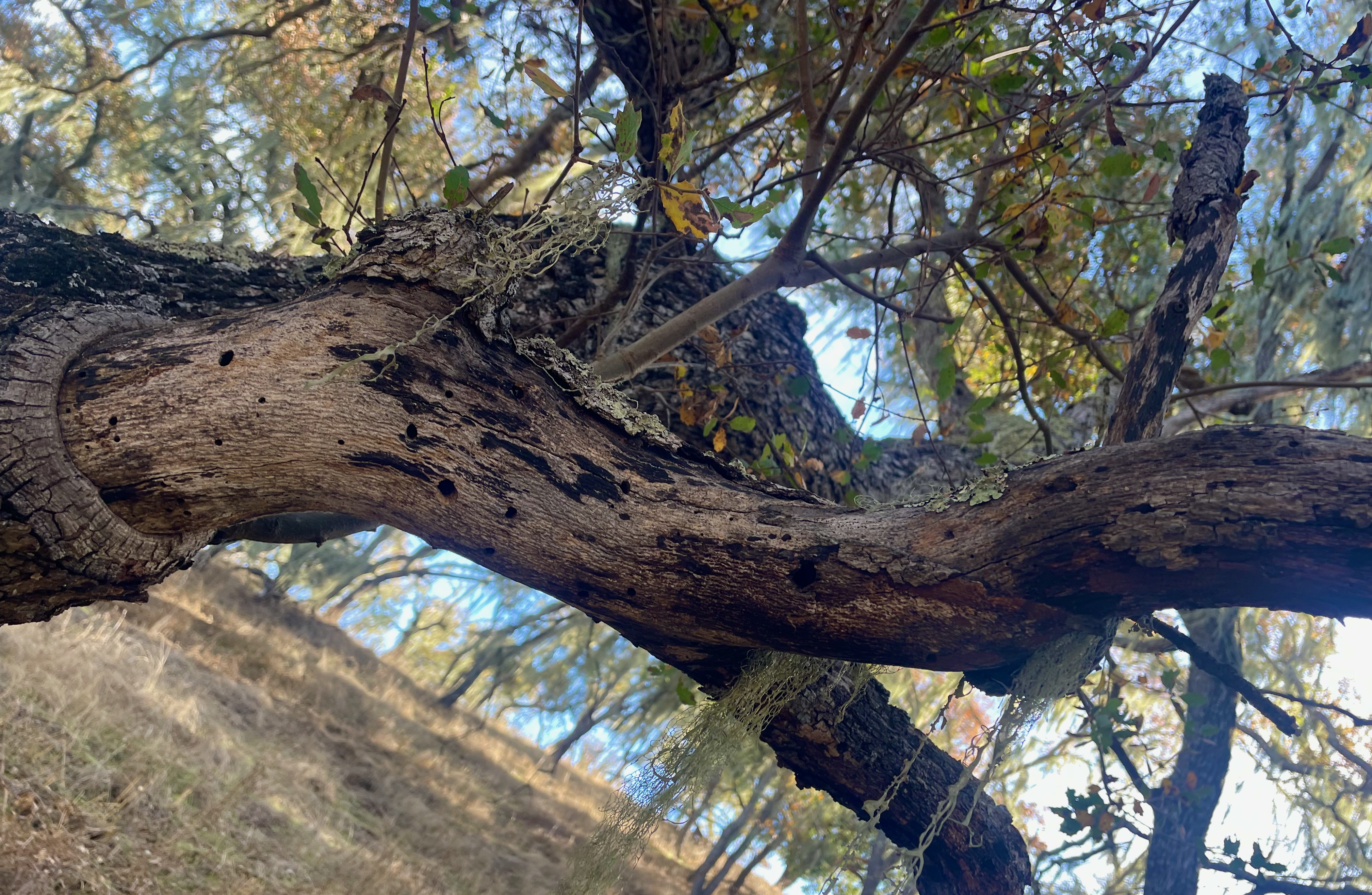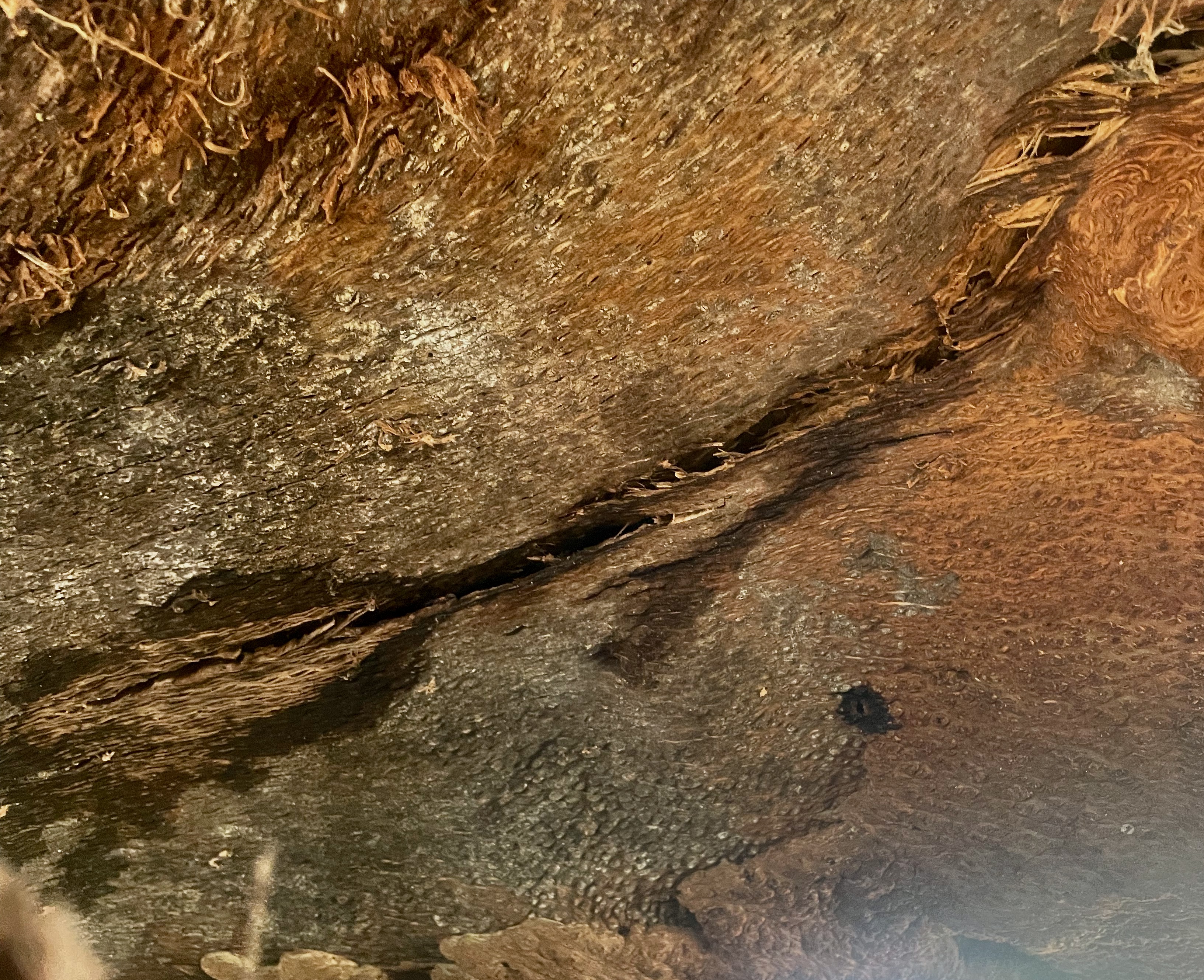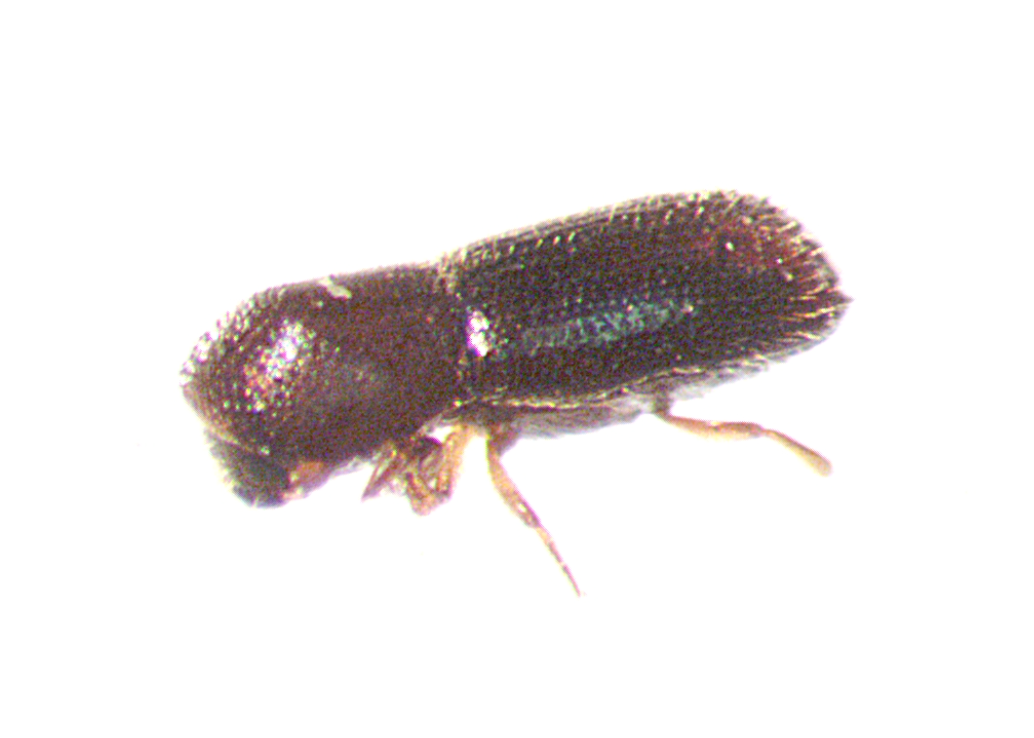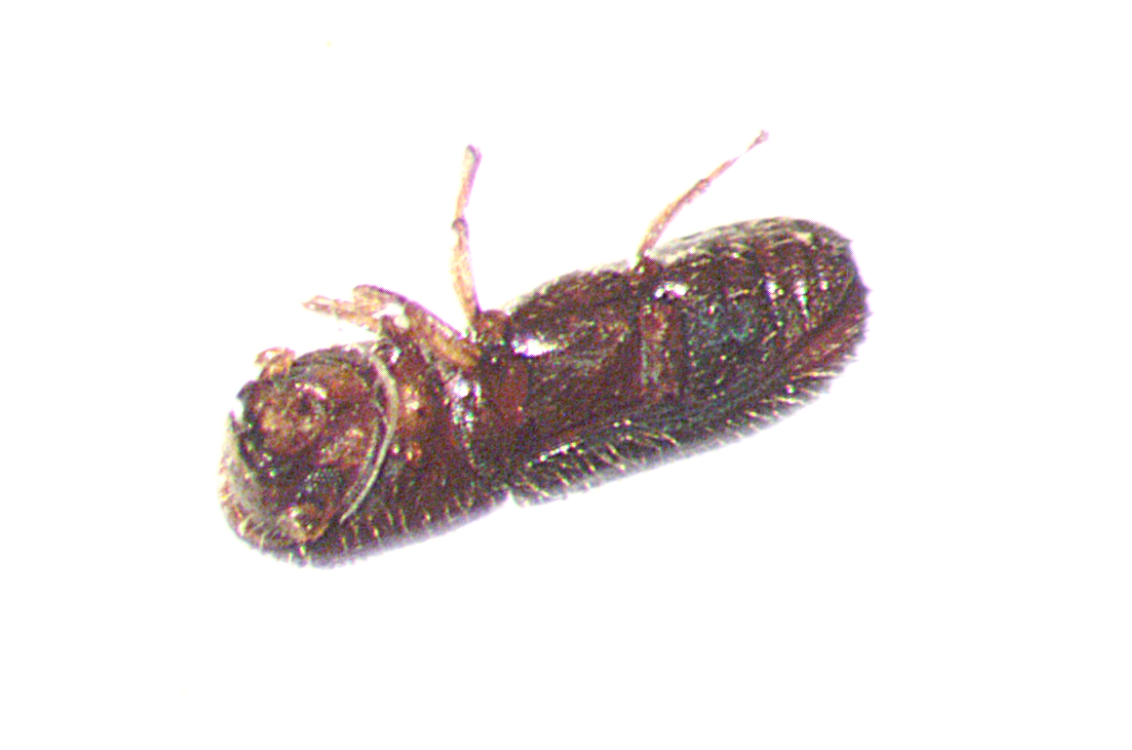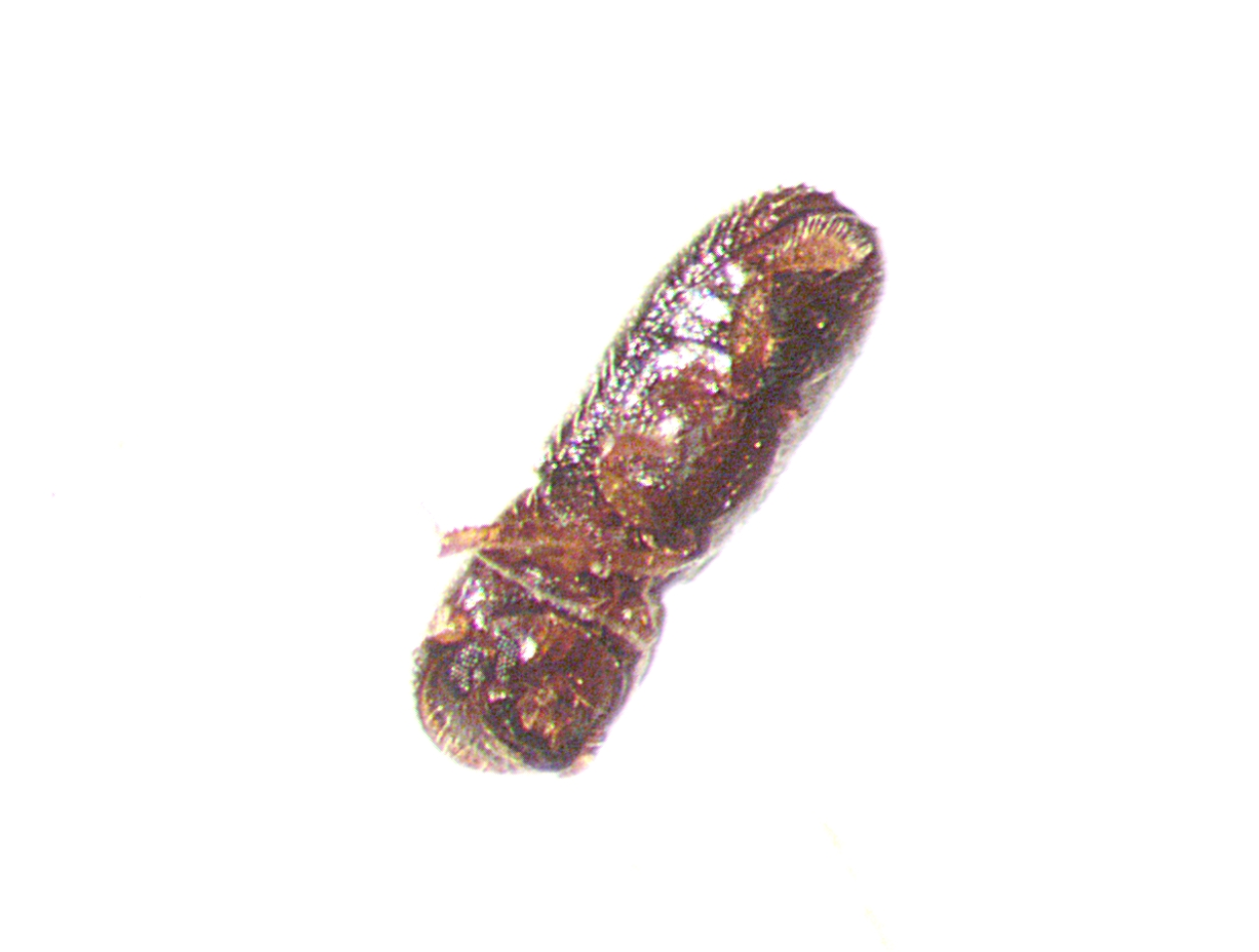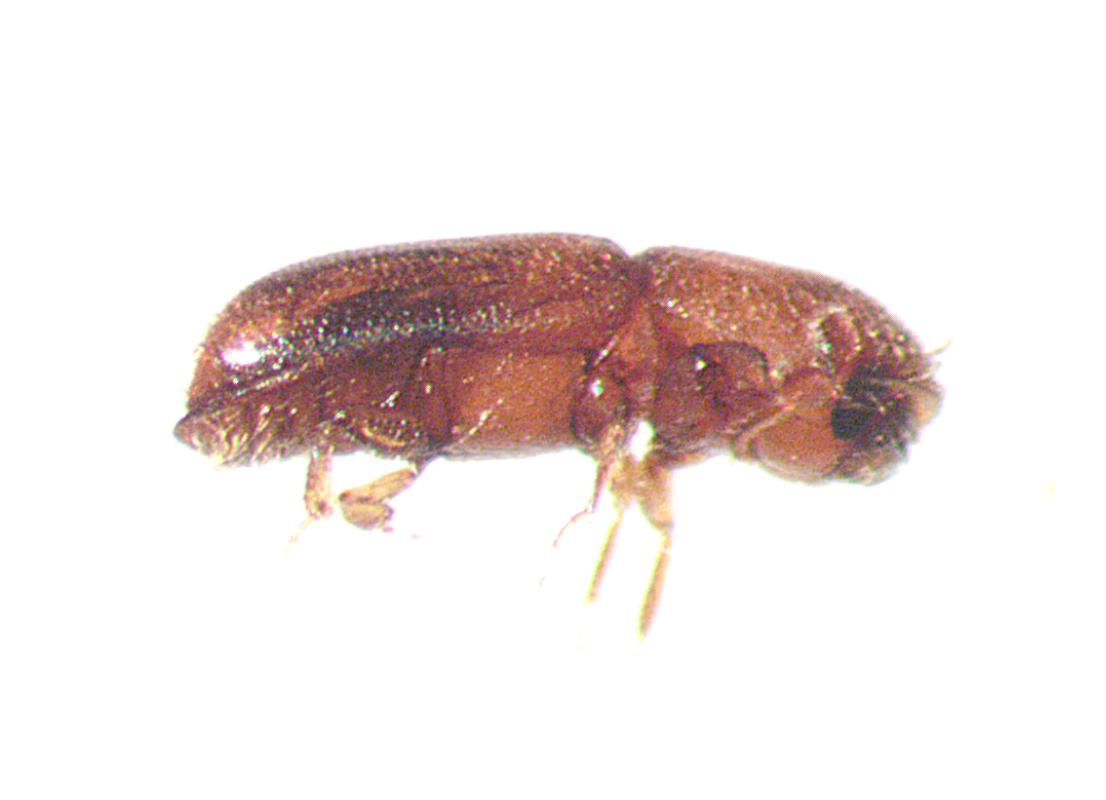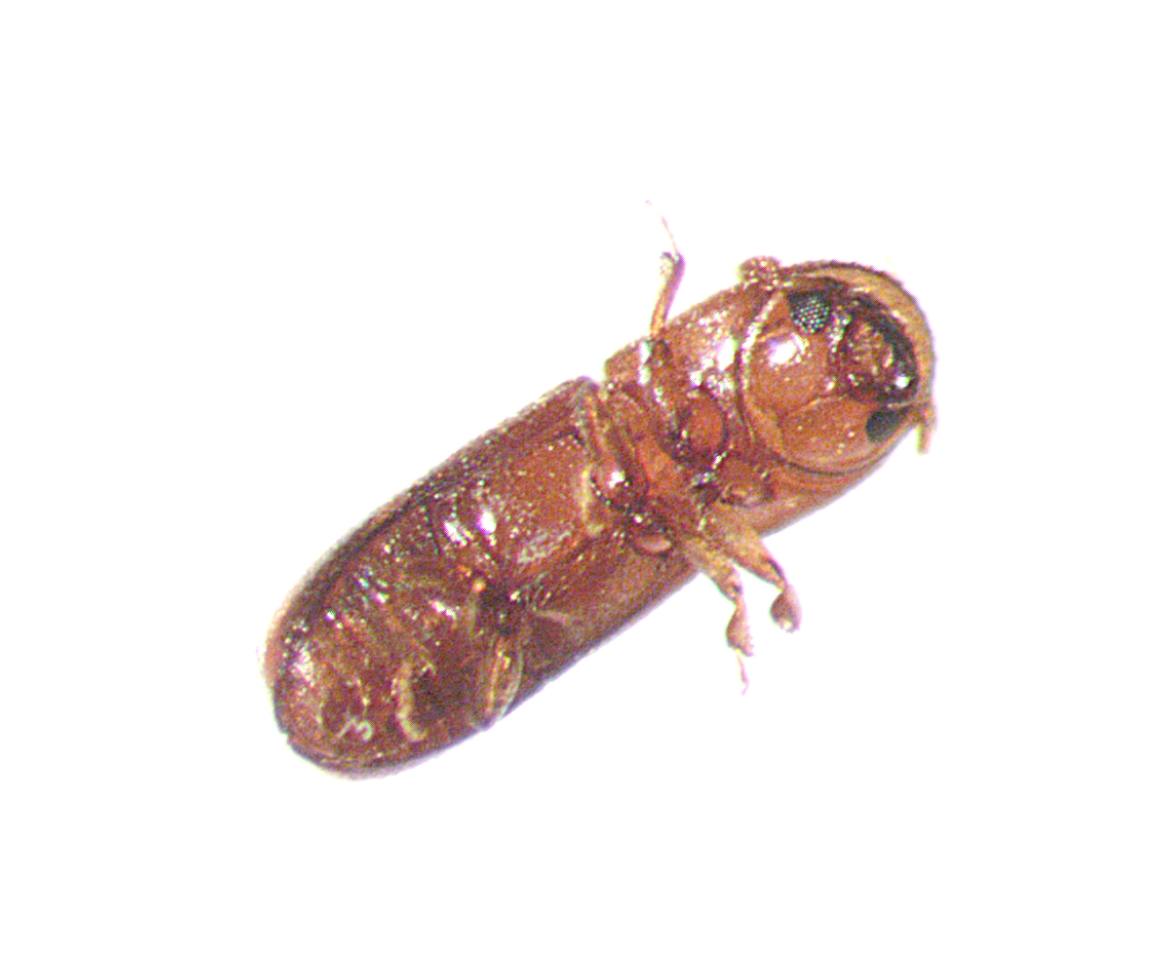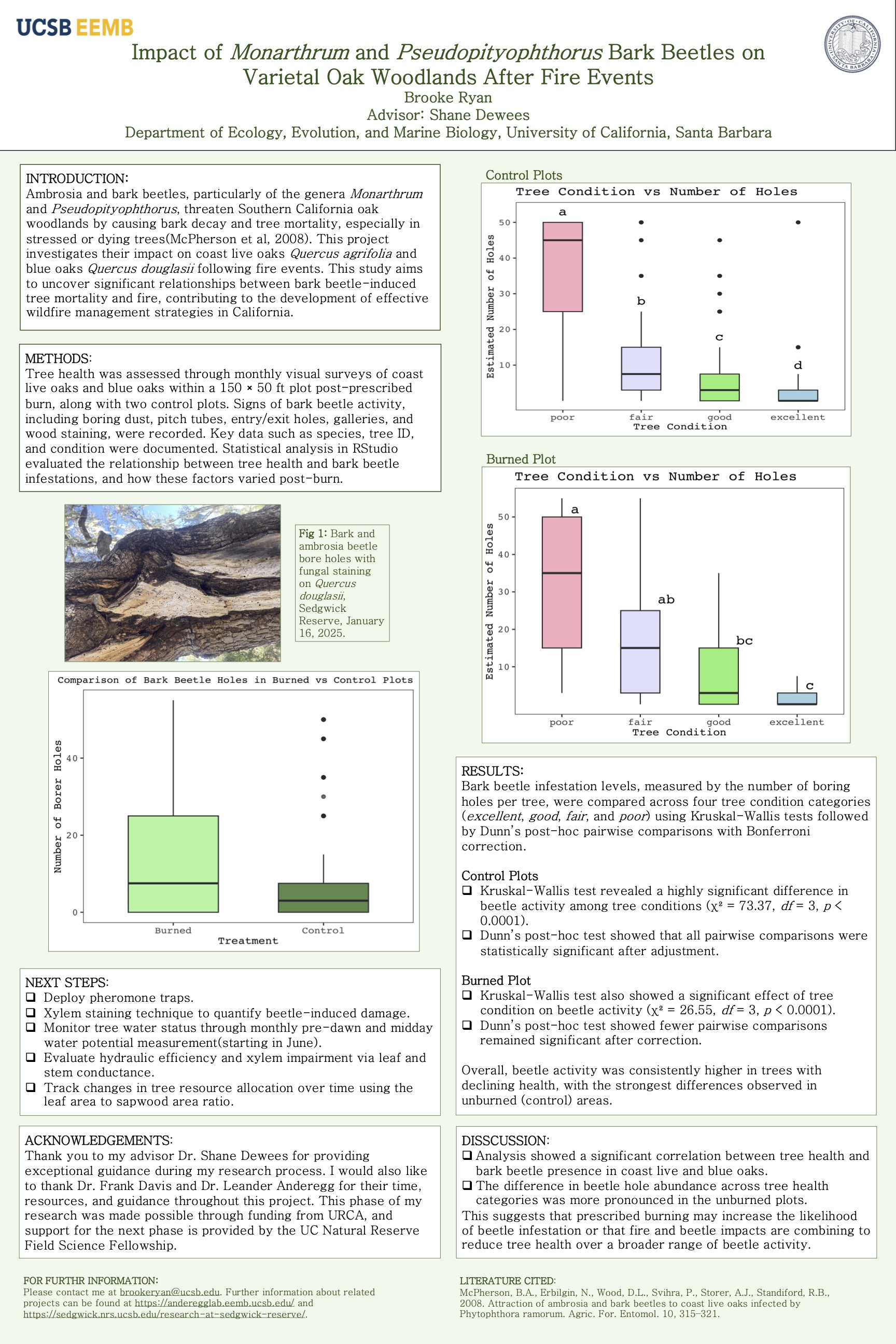As the threat of wildfires continues to grow, many are looking towards indigenous knowledge and practices of using fire to maintain the landscape. This can prevent devastating megafires and promote forest health. While prescribed burns offer numerous ecological and cultural benefits, the presence of bark and ambrosia beetles can complicate these outcomes. These insects infest trees by boring beneath the bark, creating spaces to grow and reproduce. In the process, they introduce various fungi into the trees’ sapwood, which can sometimes lead to tree mortality. Since bark and ambrosia beetles tend to target stressed or dying trees, I am investigating whether prescribed burns in infested areas might inadvertently boost beetle populations, potentially increasing tree mortality.
To explore this, I am studying blue oak and coast live oak species following prescribed burns at Sedgwick Reserve, focusing on bark and ambrosia beetle species belonging to Monarthrum and Pseudopityophthorus genera. My approach combines visual surveys and pheromone trapping to quantify changes in beetle populations. This research aims to better understand how these beetles should be managed in fire-prone ecosystems.
Beetle Symptoms
When beetles bore into trees, they create small tunnels called galleries. These galleries affect tree health in several ways: some beetle species lay their larvae inside the galleries and introduce fungi that serve as food for their offspring. Other species use the galleries as shelter while feeding on the tree’s cambium, a vital living layer responsible for transporting nutrients.
Beetle Photos
These are unidentified bark/ambrosia beetles that I collected from an ethanol-baited pheromone trap at Sedgwick Reserve on July 25, 2025
I have also uploaded a full inventory of the beetles I collected from these traps over the summer here.
Preliminary Findings and Acknowledgments
I would like to sincerely acknowledge my advisor, Dr. Shane Dewees, for encouraging me to pursue this project and for his consistent guidance throughout. I also thank Dr. Frank Davis, Dr. Leander Love-Anderegg, and the LEAF Lab for their valuable support.
I received support and funding for this project from the University of California Natural Reserve System Field Science Fellowship and UCSB’s Undergraduate Research & Creative Activities Grant. Here is my first midway report for the UCNRS and my preliminary findings that I presented at URCA Week Poster Colloquium:
